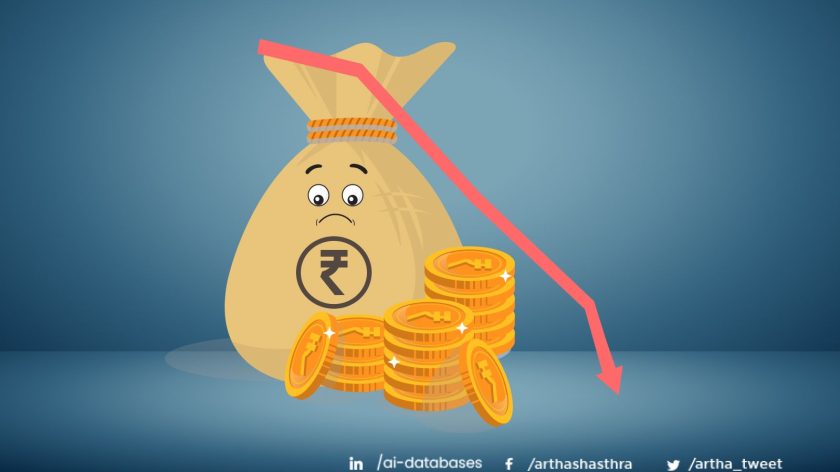Indian Rupee Weakening: Why is this happening?

This post has been authored by Anjan Kumar, Research Analyst Intern at Arthashastra Intelligence
On 16 December, the rupee slid past 76 which is a 15-month low. The last it happened was in March 2020. So, why did this happen. What are the possible reasons for such slip? We will find it now.
Fall or rise of Indian rupee is a result of the increase or decrease in the supply of US dollar. The situations arising in Globalized world will decide the fate of dollar supply. Accordingly, I have noted down 10 possible reasons for the present fall in rupee by analyzing the present situations and happenings.
First, the widening gap of trade deficit. Between April 2019 and November 2021, the deficit increased by 6 billion dollars. This happened due to higher imports and slow growth in exports. Second, the volatility in foreign portfolio markets. Withdrawal of foreign exchange from Indian equities have been higher, especially in December. As on December 23, investors pulled out approximately 17500 crores from Indian stock markets. Third, High rise in P/E ratio of the Indian stock market. Investor think twice to invest when there is a fallible environment. Fourth, Rise of global inflation. Monetary easing, low-interest rates, big stimulus packages have led to an increase in the supply of money to ordinary individuals. Easy flow of money to poor will always flow to rich, who in return invest in the markets for a want of profit. Fifth, rise in global fuel market prices. India imports 85% of the total oil consumed in the state due to which import of oil is not an option but a necessity. Such necessity creates a want for dollar as the global fuel market dealings are processed in US dollar. With experts expecting the rise of barrel cost to $85 or in some cases $90 in near future.
Sixth, A signal from Federal Reserve of the United States to increase interest rates. As said earlier, Federal Reserve lowered rates for easy money flow in the market due to pandemic. Reversing it now would reduce the money supply, which in turn would shift the burden on wholesale and retail inflation. Seventh, the Chinese credit crisis. The overdependence of globalized world by incrementally increasing the supply chains in China over the past decade has now created a big ruckus all around the world. The decline in the state’s financial conditions and severe credit crisis is now not only a state problem but a world problem. Eight, The fear of resurgence of pandemic. After the devastating effect of the pandemic’s first two waves in India, investors are a little cautious on their approach. Any adverse environment may have a negative effect on the returns they may earn. This skeptic attitude is also not a good sign for the economy’s growth. Ninth, India’s GDP numbers still not being back to pre-pandemic levels. Low base effect, slow recovery of manufacturing and industrial sector, diminishing savings and income levels etc. are some factors for such numbers. Tenth, reduction in financial transactions in foreign banks. As the financial year in globalized world is mostly from January to December, the management of the accounts, internal/external audit may have a possible effect on the weakening of rupee.
Although the weakening of a rupee is a worrying sign, many experts believe the decline to stop by the end of the final quarter (Jan 2022-March 2022) as the RBI has increased its foreign exchange reserves by purchasing enough gold (i.e., $578.57 billion in Dec. 2020 to $635.83 billion in Dec. 2021). As we enter into the new year, let us all have an optimistic view and hope the rupee plunges back to tolerance level and the growth in the economy to be steady.
